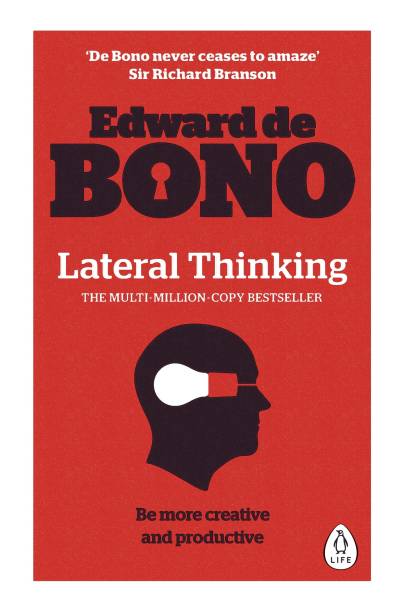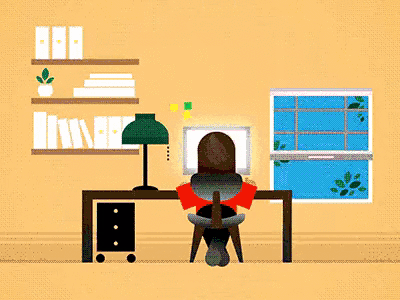Redo' as a Tool to Design Education
The art of
learning and teaching in architecture, without a ‘redo’, perhaps is the most
improbable preposition; in fact, I believe ‘redo’ is a ritual, which all
streams of design courses may have as a mainstay for creativity. Any creative
design process begins with looking at a situation from multiple points of view,
as there is no single solution or linear approach to design. A teacher who has
never used this tool of ‘redo’ in the process of opening the realm of ‘idea
generation’ has probably not justified his role on opening the channels of
‘creative thinking’ in the mind of the aspiring student. Edward De Buno in his
book ‘lateral thinking’ invites his readers to see beyond the mundane and
explore various possibilities which are not visibly clear at once.
We
in design schools often talk about ‘out of the box’ thinking and
‘innovation’. To innovate in design is the most challenging task. The notion
‘can innovation come from the start itself’ must be questioned. Our start is
always based upon our ability to grasp the design challenge and process various
parameters in forming our initial ideas. Most of us fall prey to the ‘my first
design idea’ and later forget to develop it or take it higher; I call it ‘love
at first sight’ design syndrome. I have seen students struggle with a start and
end up making ‘repair work’ to those ideas arriving at a very systematically
‘modified’ and ‘lesser performing’ design solution, it is such a creative
‘waste of efforts’. It is never late to refresh an idea or it becomes too late
to change later: I call it ‘conceptual innovation’ as a precursor to design. I
have rarely met a student that does not have an idea of how bad the design is
performing; it is only that the aspirant seeks an approval nod, so that he/she
doesn’t have to go through the process all over again (redo-aversion strategy).
Eligibility
Requirements for Admission to Architecture in
India:
Qualifying Entrance Exam: NATA or JEE-Paper II
(For any details contact us)
Website:
www.tsapmumbai.in
E-mail:
tsap@thakureducation.org
Contact:
022-67308001/02
Whatsapp:
+91-9833665446
In a creative
process, when we make a re-attempt to a given assignment or exercise our aim is
to review the previous exercise and then use the gained experience to apply in
the current attempt and improve from the last one. A constant repetition of
this process over and over again shall enable us to arrive at newer solutions
and perspectives leading us to innovation. It is like for becoming a skilled
scuba diver, then one must improve upon the depth, in every single attempt,
there is no point in having too many ideas and not knowing which one to lead
forward.
As it is said
‘desperation is the mother of all solution’, the biggest inventions done in the
world were possible only by maintaining a clear focus and pressing the limits
of our thinking
ability. We need to put our grey cells to task, if we fail to challenge/
stimulate/ arouse or incite them, our creative abilities remain dormant. In the
world of business being ‘paranoid’ about the product manufactured by an
industry is seen as an ‘impetus’ in innovating and maintaining a leadership
through constant research and development. Using spare hours for engaging brain
storming sessions, solving word games, mathematical and geometrical problems or
puzzles are tremendous brain stimulants. The mantra is ‘keeping it active’.
Please note keep yourself away from non-stimulant, repetitive, so called
‘engrossing games’.
In an
environment of ‘comfort’ our mechanism of ‘ideation’ and ‘problem solving’
slows down, in to the mode of hibernation. It is important to maintain a mental
stimulus, by exposing the grey cells to various different challenges to keep
the cells stimulated and active. Those involved with the profession of
‘creative thinking’ and ‘idea generation’ are required to maintain a good
mental health, stability of the mind and balanced physical condition. To
develop our efficiency, we must train our mind, to carry out work with full
focus and concentration without any external distractions; no doubt so many
students of architecture work ‘late in the night’, as during the day they are
distracted by the ‘surrounding stimuli’. Being creative doesn’t require being ‘nocturnal’,
it is not the rationale; the idea is to be meditatively involved and ‘single-
minded’.
All students of architecture get the best possible ideas at the very last moment, just hours before the dawn, of the submission day, be it a detail in the section, a zoning or orientation in the planning or final modifications to the design model to improve design solution, all are last minute ideas. If we are able to create that similar impulse, sense of urgency and I don’t like to use the word, but it is ‘pressure’ or ‘gravity’ our creative abilities are not tested. The recent trend of young students taking help of ‘external stimulants’ to ease so called pressure is utter nonsense and a hindrance in the pursuit of creative thinking, which can later become a road block reducing the neutron performance of the grey cells.
I have seen that most offices doing creative work are blamed for being slow or delayed in producing the output, even some students claiming to be more creative than others find justification in taking more time than others as their designs are more refined or creative. The act of ‘drawing production’ is a creative process of‘ putting ideas to paper’. The problem starts; when we don’t have an ‘idea’ and we don’t know where to start from? I openly advocate to my students to ‘draw first, think later’. It takes immense amount of courage ‘to draw the first line on to the face’ of the sheet, our hands refuse to move or touch the sheet as our mind awaits a creative idea to fly by for us to catch. All great design ideas start from the ‘first line on paper’, do be early to make a start, cause if there is an idea on paper, you can understandably also know what to do with it. There is no point in brooding ideas in the head carrying them around and not drawing at all. When we put pencil to paper, we create a channel for ideas to flow, a rhythm is established, now it is only to be reviewed and configured taking to higher ground using the ‘redo’ tool. If you ever, get a redo, see it as an opportunity to take yourself to another level and improve.
All students of architecture get the best possible ideas at the very last moment, just hours before the dawn, of the submission day, be it a detail in the section, a zoning or orientation in the planning or final modifications to the design model to improve design solution, all are last minute ideas. If we are able to create that similar impulse, sense of urgency and I don’t like to use the word, but it is ‘pressure’ or ‘gravity’ our creative abilities are not tested. The recent trend of young students taking help of ‘external stimulants’ to ease so called pressure is utter nonsense and a hindrance in the pursuit of creative thinking, which can later become a road block reducing the neutron performance of the grey cells.
I have seen that most offices doing creative work are blamed for being slow or delayed in producing the output, even some students claiming to be more creative than others find justification in taking more time than others as their designs are more refined or creative. The act of ‘drawing production’ is a creative process of‘ putting ideas to paper’. The problem starts; when we don’t have an ‘idea’ and we don’t know where to start from? I openly advocate to my students to ‘draw first, think later’. It takes immense amount of courage ‘to draw the first line on to the face’ of the sheet, our hands refuse to move or touch the sheet as our mind awaits a creative idea to fly by for us to catch. All great design ideas start from the ‘first line on paper’, do be early to make a start, cause if there is an idea on paper, you can understandably also know what to do with it. There is no point in brooding ideas in the head carrying them around and not drawing at all. When we put pencil to paper, we create a channel for ideas to flow, a rhythm is established, now it is only to be reviewed and configured taking to higher ground using the ‘redo’ tool. If you ever, get a redo, see it as an opportunity to take yourself to another level and improve.
Ar. Dhiraj N. Salhotra
M.Arch. (Gen), M.Arts (His.). Professor, TSAP.








Good read for thinking critically.
ReplyDeleteNice article
ReplyDeleteGotta drill this in head. Thanks for sharing! Very useful
ReplyDelete